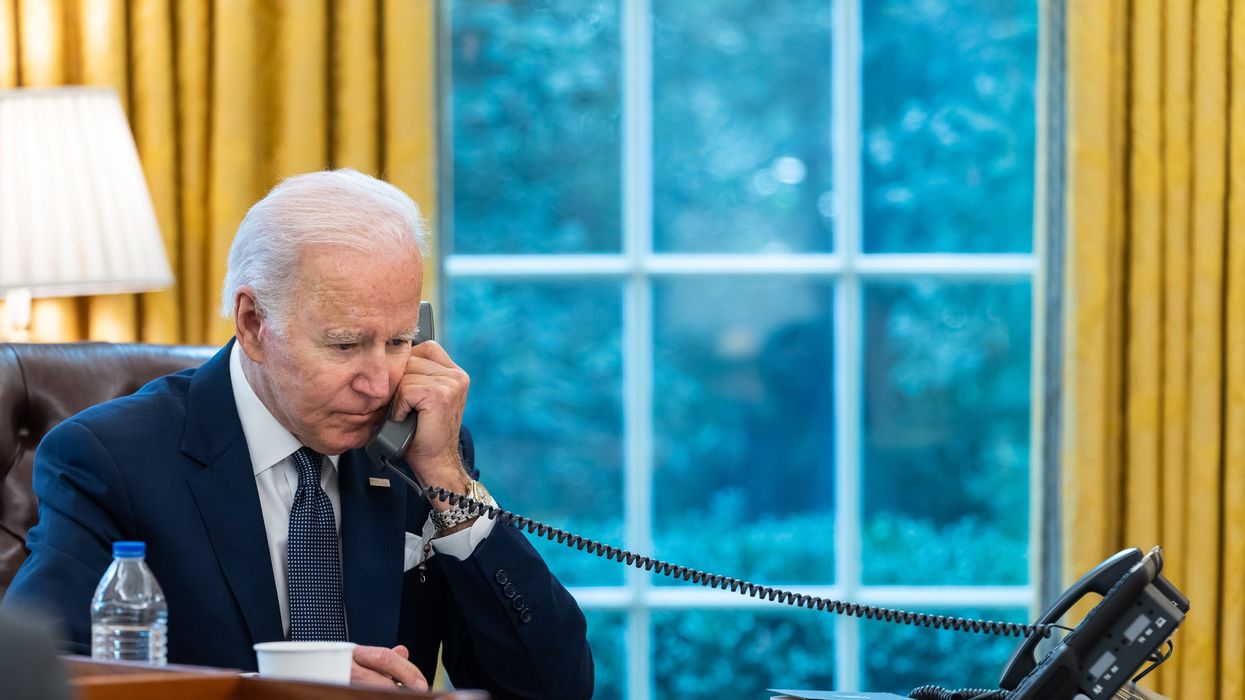'Storm clouds gathering': Report details worries in DC as Putin was preparing a full-fledged Ukraine invasion


Friday, February 24, 2023 marks the one-year anniversary of Russia’s invasion of Ukraine, which has brought the worst fighting in Europe since World War 2. Some Ukrainians have argued that Russia’s invasion of Ukraine under President Vladimir Putin really started in 2014 with the annexation of Crimea, but the invasion that was launched on February 24, 2022 went way beyond Crimea. This time, Putin and his allies in the Kremlin set out to take all of Ukraine.
Twelve months later, the war in Ukraine rages on. Ukrainian President Volodymyr Zelensky has vowed to keep fighting, and U.S. President Joe Biden promised him additional military aid and more sanctions against Russia during a surprise visit to Kyiv on Monday, February 20. Zelensky isn't giving up, but neither is Putin.
In a detailed, in-depth article published by Politico on the day of the February 24 anniversary, various military and national security experts look back on the events leading up to the invasion. Politico’s interviewees range from Gen. Mark Milley, chairman of the Joint Chiefs of Staff, to Secretary of State Antony Blinken.
READ MORE: Former GOP strategist praises Biden’s 'alpha move' in Ukraine while slamming MAGA response
Blinken told Politico, "The storm clouds were starting to gather many months before the invasion…. We saw not only the massing of forces on the borders of Ukraine, we also — through the information that we got — had an understanding of what the Russian leadership was actually thinking and planning for those forces."
In the weeks and months before February 24, 2022, national security experts were hoping that Putin wouldn't actually go through with a full-fledged Ukraine invasion. But the signs that he would, Milley recalled, were quite ominous.
The Joint Chiefs of Staff chairman told Politico, "We set up to brief the president. We briefed in the Oval, and it's a very serious, very somber brief: There’s this many Russian forces, this is the size, this is what the capability is, this is their composition, this is the disposition. This is the size of the Ukrainian forces. We went over what the Russians' most likely and most dangerous courses of action are. It certainly grabs everyone’s attention."
Former U.K. Prime Minister Liz Truss remembered how worried British officials were in 2021.
READ MORE: Why President Joe Biden's visit to Ukraine is his 'ich bin ein Berliner' moment: journalist
The Tory Conservative told Politico, "The threats clearly became worse through the autumn (of 2021)."
One of Putin's reasons for invading Ukraine was his fear of NATO (the North Atlantic Treaty Organization) growing larger. But ironically, the invasion encouraged one of the things that Putin feared: a NATO revitalization. For decades, Sweden and Finland stayed out of NATO; after Russia invaded Ukraine, they applied for membership — a move that Biden applauded.
Avril Haines, national intelligence director under Biden and former deputy director of the Central Intelligence Agency (CIA) under Democratic President Barack Obama, told Politico, "He saw Ukraine inexorably moving towards the West and towards NATO and away from Russia…. He saw the Ukrainian military becoming significantly stronger…. And if you were looking at it through the lens of somebody who perceived Ukraine moving away from Russia as being something that you had to stop at all costs, you could begin to see how it wasn’t going to get any easier over time."
READ MORE: Greene blasted for 'parroting Kremlin talking points' on Biden Ukraine trip
Read Politico’s full report at this link.